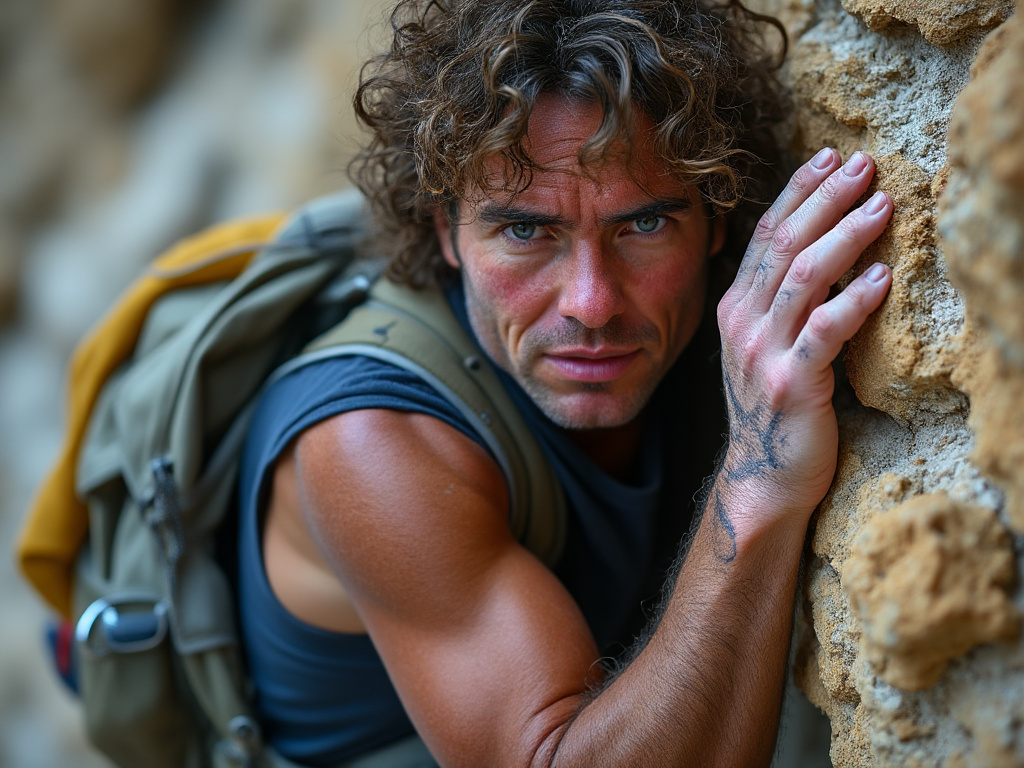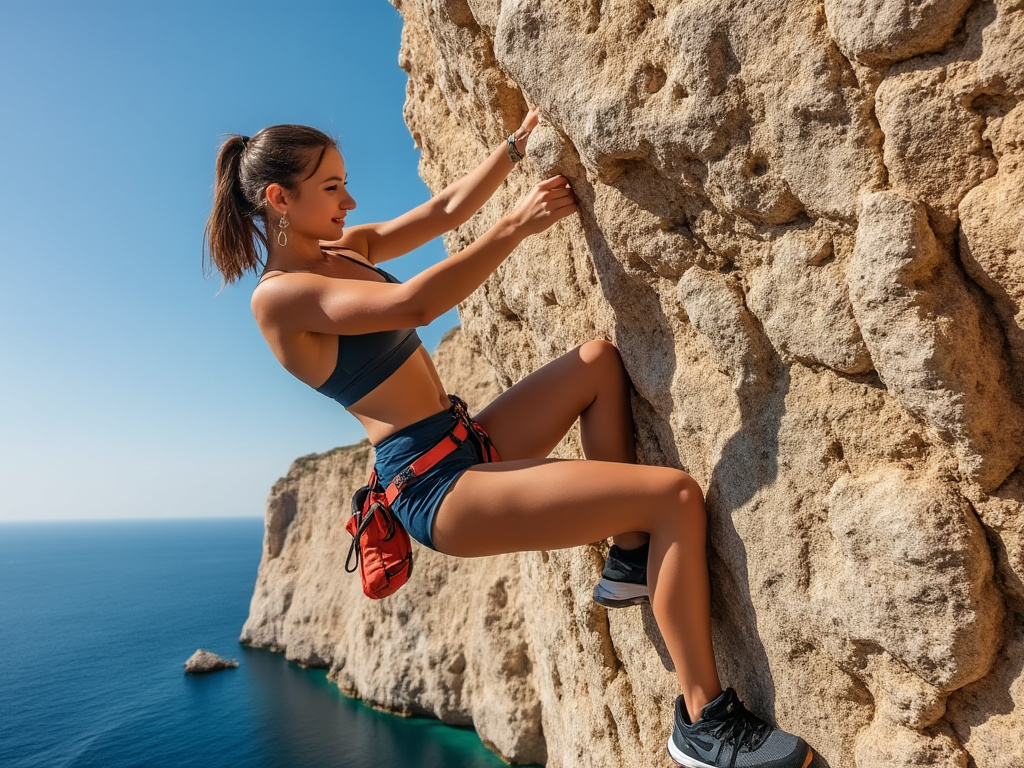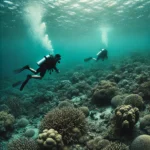| Malta Short Let: Cozy Stay in Gzira | |
|
Sliema Area Modern Designer Finished 2 Bedrooms + Games Room. First floor with Maltese Balcony Large back Terrace with swinging sofa Fully Airconditioned + Full Kitchen 3 TVs, including 65” with backlight. |
 |
|
Book Now: Google Travel | Direct (Cheapest) | Booking.com | Airbnb |
|
Climbing on a sun-soaked cliff, the Mediterranean Sea stretching endlessly before you, its waves whispering stories of ancient mariners. The rock beneath your fingers is warm, textured, and inviting. Welcome to Malta—a climber’s paradise where history, adventure, and natural beauty converge.
Why Malta Should Be Your Next Climbing Destination
When the cold grips the rest of Europe, Malta remains a haven of warmth. With temperatures almost always hovering around 20°C and above, especially in fall and winter, it’s like nature’s invitation to extend your climbing season. The sea and rivers have carved stunning pieces of limestone, offering a playground for climbers of all levels.
The Maltese Archipelago: More Than Just One Island
Malta is not just one island but an archipelago consisting of several, each with its unique charm:
- Malta: The largest and most populated island, bustling with life yet offering serene coastal cliffs for climbing.
- Gozo: The second largest, known for its rural landscapes and some of the best climbing spots.
- Comino: Mostly uninhabited, it’s a hiker’s dream with its rugged terrain and crystal-clear waters.
Each island has its own character, and as a climber, you’ll find that they all deserve your time.
Diverse Climbing Opportunities Await
Malta’s climbing scene is as varied as its landscape. From steep sea cliffs to inland valleys, there’s something for everyone:
Sport Climbing
The islands boast over 500 bolted sport routes, ranging from grade 3 up to 8c+. The bolting is beginner-friendly, often with bolts no more than two meters apart. This makes it an excellent place for those new to outdoor climbing or looking to build confidence.
Traditional Climbing
For the trad enthusiasts, Malta offers a rich history of routes established by British climbers. The sea cliffs provide an adventurous feel, reminiscent of a blend between Gogarth, Pembroke, and the Devon coast.
Multi-Pitch Routes
If you’re into longer climbs, there are numerous multi-pitch routes, many of which are bolted and offer grades up to 5b or higher. Climbing these routes gives you a sense of journey, much like reading an engrossing novel that you wish would never end.
Deep Water Soloing (DWS)
The clear Mediterranean waters make Malta perfect for DWS. Imagine climbing without ropes, knowing that the sea awaits below if you fall—it’s the purest form of climbing freedom.
Limited Bouldering Opportunities
While bouldering isn’t as prominent due to the lack of large boulder fields, there are still spots, especially on Gozo, where you can enjoy short but challenging problems.
Climbing Near Historical Sites
One of the unique aspects of climbing in Malta is the proximity to ancient ruins and historical landmarks. As you climb, you might find yourself near centuries-old fortifications or overlooking sites that have stood the test of time. It’s like scaling the pages of history, one move at a time. For a deeper dive into Malta’s rich past, check out 30 Fascinating Facts About Malta.
The Blue Grotto: A Must-Visit Climbing Spot
No discussion about climbing in Malta would be complete without mentioning the Blue Grotto. Known for its picturesque climbing routes above crystal-clear waters, it’s a spot that combines the thrill of climbing with the awe of nature’s beauty. The limestone arches and sea caves provide routes that are both challenging and visually stunning.
Ethical Climbing Practices: Preserving Malta’s Natural Beauty
Climbing in Malta isn’t just about personal achievement; it’s also about respecting and preserving the environment. Ethical climbing practices are strongly encouraged to maintain the natural beauty and integrity of the rock formations. This includes:
- Minimizing Chalk Use: To keep the rock’s appearance natural.
- Leaving No Trace: Packing out all trash and not damaging vegetation.
- Respecting Wildlife: Being mindful of nesting birds or other animals that call the cliffs home.
Think of it like visiting someone’s home—you want to leave it as you found it, or better.

Efforts by Maltese Authorities and Local Climbers
The Maltese authorities, along with local climbers, have been proactive in developing and maintaining climbing areas to ensure safety and sustainability. Recent initiatives include:
- Bolting with Titanium Bolts: To withstand the harsh sea climate that corrodes traditional bolts.
- Regular Route Maintenance: Ensuring that existing routes remain safe and enjoyable.
- Promoting Climbing Tourism: Recognizing the value climbers bring to the local economy and supporting infrastructure development.
It’s a collaborative effort that benefits everyone, much like a well-coordinated climbing team where each member plays a crucial role.
Climbing Guides and Schools
Whether you’re a beginner looking to get into climbing or an experienced climber wanting to explore the best spots, Malta has several climbing schools and guides available:
- Instruction and Courses: For all levels, from basic techniques to advanced skills.
- Guided Tours: Taking you to the best routes suited to your ability.
- Equipment Rental: For those who couldn’t bring their own gear.
This makes Malta an accessible destination even if you’re new to climbing.
The Unique Geography: Emphasizing Coastal Climbing
Malta’s highest point, Ta’ Dmejrek, stands at only 253 meters above sea level. This means the island’s topography is more about dramatic coastal cliffs than towering mountains. It’s as if the island was designed for climbers who love the sea’s proximity, offering climbs that often start or end near the water.
Where to Stay
Comfortable AirBnBs to Relax After Climbing
After a day of conquering cliffs, you’ll want a comfortable place to rest. Consider staying at one of these highly recommended AirBnBs:
- 1 bedroom Apartment in Sliema: Located in one of the best towns on the island. Sliema will allow you to relax in between your climbs, good restaurants and a nice promenade just a few meters away. Check it out : Sliema AirBnB
- 2 Bedroom Apartment in Gzira : Experience authentic Maltese living in this beautiful2 bedroom apartment with a games room. Well connected to the island and also close to the most popular promenade on the island. Check it out : Gzira AirBnB
Gear Up: What You Need
- Rope: A 60-meter rope will suffice for most climbs, but a 70-meter rope offers more flexibility.
- Quickdraws: Bring 12 to 14, including a few longer ones for extended bolts.
- Anchors: Be prepared for various top anchor setups—chains, rings, or bolts.
- Protection for Trad Routes: A standard rack with nuts and cams if you plan on trad climbing.
- Climbing Guidebook: The most recent comprehensive guide is a few years old, but updates are available digitally through the Malta Climbing Club.
Traveling to and Around Malta
Getting There
Flying into Malta is straightforward, with flights from all over Europe. In the low season, it’s easy to find affordable flights. For tips on making the most of budget travel to Malta, especially during winter, check out December Cheap Warm Destinations.
Getting Around
- Car Rental: Recommended for flexibility. Remember, they drive on the left, and the driving style can be adventurous.
- Public Transport: Buses are available but can take longer to reach climbing spots.
- Taxis: Apps like eCabs and Bolt are reliable.
Navigating the Roads
Roads can be narrow, and signposting isn’t always clear. A GPS or a good map is essential. Think of it as an adventure before the actual adventure—a prelude to the climbing stories you’ll tell.
Climbing Spots You Shouldn’t Miss
On Malta
Għar Lapsi
- Type: Sport Climbing
- Features: Sectors like Twin Caves, Learning to Fly Cave, and Terry’s Cave.
- Experience: Climb with sea views and possibly encounter some local wildlife (yes, even rats in pockets!).
Wied Babu
- Type: Mixed Sport and Trad
- Features: Routes like Blue Wall and Red Wall.
- Experience: A descent into a valley with a variety of climbs for different skill levels.
Hamrija Tower Slabs and Ix-Xaqqa
- Type: Trad Climbing
- Features: Less crowded areas with quality routes and a sense of solitude.
On Gozo
Mgarr ix-Xini
- Type: Sport Climbing
- Features: Walls like Champagne Wall and Dream Walls.
- Experience: A picturesque gorge with routes ranging from easy to challenging.
Wied Il-Mielah
- Type: Sea Cliff Climbing
- Features: Climbing near a natural rock arch.
- Experience: Multi-pitch routes with the sea roaring beneath you.
Ta’Cenc Cliffs
- Type: Trad and Sport
- Experience: Adventurous climbs with abseil approaches.
More Than Just Climbing
Hiking
Malta offers fantastic hiking trails, especially along the coast. The Malta Coastal Walk is a favorite, providing stunning views and a chance to explore the islands’ natural beauty. For those interested in exploring at their own pace, consider a Self-Guided Tour of Malta.
Diving
The clear Mediterranean waters make Malta a diving hotspot. Whether you’re a seasoned diver or a beginner, there’s an underwater world waiting to be explored. For a primer on the best underwater adventures, visit Scuba Diving in Malta.
Cultural Experiences
With a history spanning thousands of years, Malta is rich in cultural sites:
- Ancient Temples: Visit some of the world’s oldest free-standing structures.
- Fortifications: Explore medieval fortresses and walls.
- Valletta Nightlife: Enjoy the vibrant atmosphere with bars, restaurants, and live music.
If you’re a digital nomad, Malta is also a fantastic place to work remotely while enjoying all these activities. Learn more in Malta for Digital Nomads.
Local Cuisine
Don’t miss out on Malta’s culinary delights. From fresh seafood to traditional pastries like pastizzi, your taste buds are in for a treat. For a deeper dive into the island’s food scene, check out Food in Malta.
Practical Tips
- Weather: Check the Climate of Malta to plan accordingly.
- Stay Hydrated: The sun can be intense, so bring plenty of water.
- Sun Protection: Sunscreen and a hat are essential.
- Local Customs: The Maltese are friendly and welcoming. A simple “Grazzi” (thank you) goes a long way.
Final Thoughts
Malta may not be the first place that comes to mind when thinking of climbing destinations, but perhaps it should be. With its diverse climbing opportunities, rich history, welcoming community, and efforts to maintain and improve climbing areas, it’s a hidden gem waiting to be discovered.
So pack your gear, bring your sense of adventure, and get ready to write your own climbing story in the heart of the Mediterranean.
Rest in Comfort After Your Adventure
After an exhilarating day on the cliffs, unwind at a cozy AirBnB that feels like home. We can offer you a short term apartment with all the amenities a home away from home in Sliema or in Gzira
Disclaimer: The information provided in this article is based on personal experiences and research up to the date of publication. Rock climbing is an inherently risky activity that can result in serious injury or death. It is essential to have proper training, use appropriate safety equipment, and exercise caution when climbing. Always consult local climbing guides or authorities, check weather conditions, and be aware of local regulations before attempting any climbs in Malta or Gozo. The author and publisher of this article are not responsible for any injuries, damages, or losses resulting from the use of this information.








